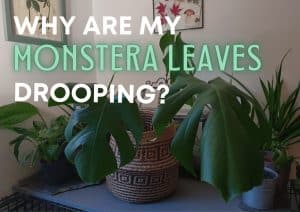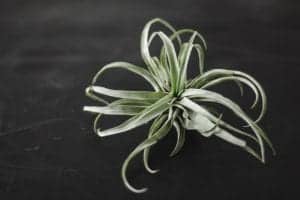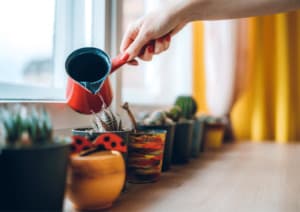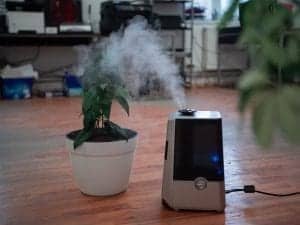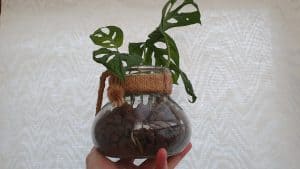The Essential Guide To Watering Your Indoor Plants
There is no greater killer of houseplants than overwatering.
Being kept indoors where there is no wind to accelerate transpiration to dry out wet soil, combined with limited access to sunlight, water held in the potting mix that surrounds houseplant roots can persist for a long time.
Never truly letting the subsurface layers of the soil fully dry out means the root network can remain drenched all of the time.
Often you won’t know when a plant is experiencing root rot until it’s too late and irreparable damage has been caused to the root system.
So the challenge of watering houseplants is to meet the plant’s needs with consideration towards their growing environment.

How Do You Know When Your Houseplant Needs Watering?
There are telltale signs given off by a houseplant begins to becomes dehydrated, with most of these being visibly displayed by the foliage. Curled leaves, browning leaves and a shrivelled appearance to name but a few.
For the plant to show visible signs of change means it is experiencing stress, so ideally we want to try and catch its need for water before this point.
That said it’s also absolutely natural for plants to experience drought and wet seasons in their natural environments so don’t worry about timing it perfectly.
One rough way to check whether your houseplant needs watering is to plunge one of your fingers into the potting mix down to your second knuckle, a depth of about 50mm. If your finger can be removed with little to no substrate on it then the pot can be considered sufficiently dry and ready for more water.
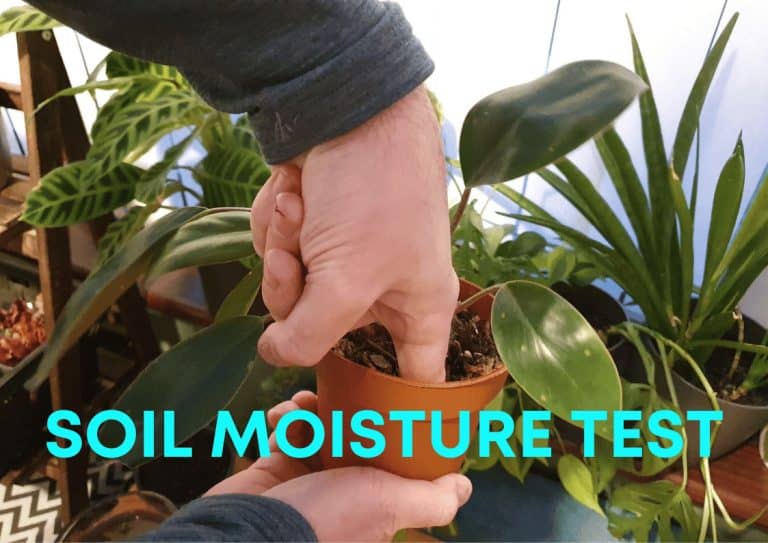
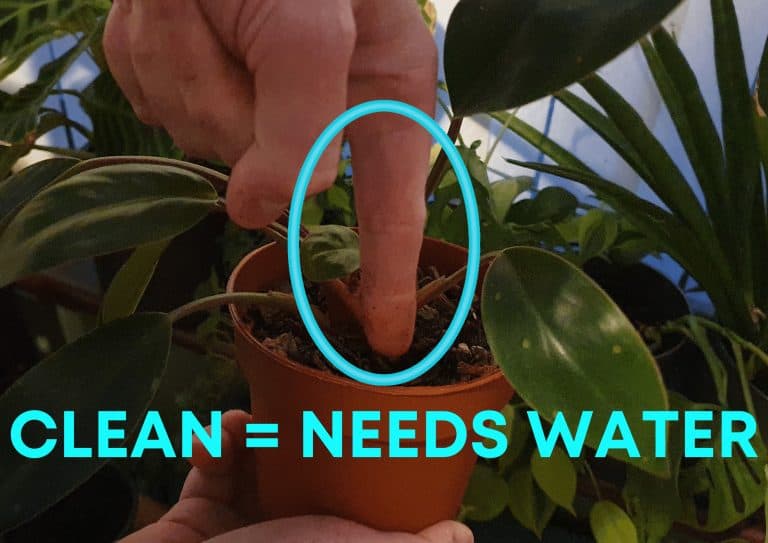
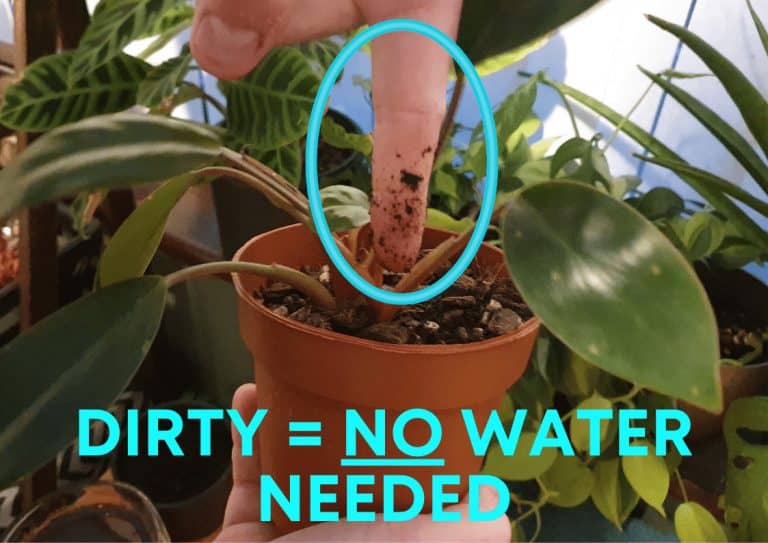
Exceptions To The Rule
Of course, with thousands of different plants kept indoors, blanket guidance on when a plant needs watering will never cover the best interests of all species.
Example being plants that have evolved in arid conditions who do not cope well when soaked in water, or carnivorous plants who mostly need boggy conditions brought about by constantly wet soils.

Top Down Watering vs Bottom Up Watering
Once you’ve established your plant needs watering there are a number of ways in which you can go about delivering hydration.
Top down watering involves adding water to the top of the potting mix and lets it percolate through the soil. Normally via a watering can or shower.
The risk with this approach to watering is that if the substrate is well aerated the water may quickly pass through and out the pot’s drainage holes before the soil has a chance to absorb water to later deliver to the roots.
If your plant pot cannot be moved to a place where it is allowed to drain freely adding too much water may mean that excess water will gather and submerge the roots, risking root rot.
A far safer way to water houseplants is to use the bottom up watering method.
Bottom up watering involves placing the liner pot into a basin of water and leaving it until the potting mix absorbs as much water as it can hold and no more.
Whatever method you use a soaked pot mix should be left until completely dry before repeating the exercise. Try to resist the temptation to water too soon.
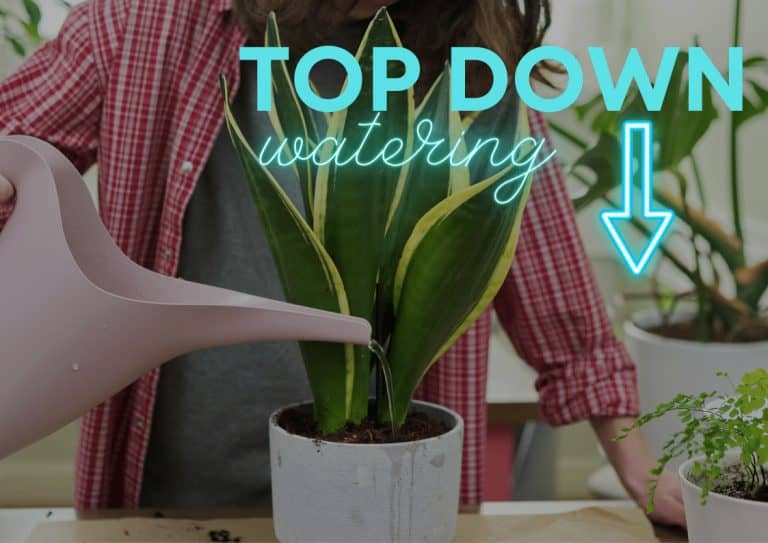
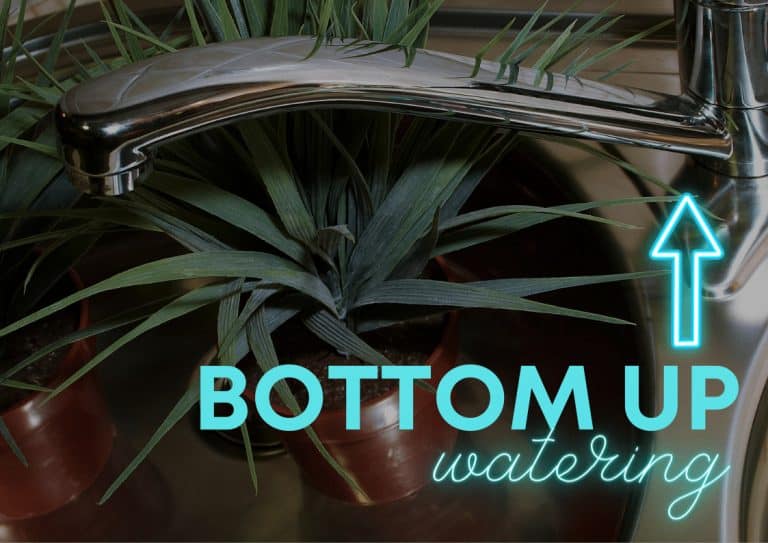
How Much Water Does Your Plant Need?
We measured the volume of water needed to saturate 1l of houseplant potting mix to be as little as 60ml. How we reached this conclusion is shown below.
This is far less than first thought necessary, and far less than is usually poured into a pot when using a watering can.
And certainly backs up the importance of only using plants that have sufficient drainage.
It's far easier to recover a plant from drought than dry out a plant that has been overwatered. When bringing a new plant into your home its safer to go easy on the watering to begin with and keep an eye on how it acclimatizes to its new surroundings.
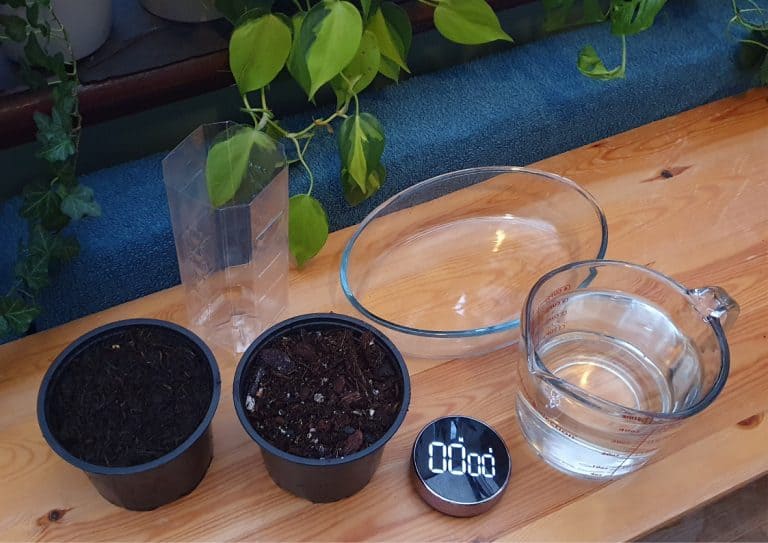
Materials we used to measure water uptake by different houseplant soils:
- 1 liter of Monstera/Philodendron potting mix (coco husk, coco coir, perlite & worm castings)
- 1 liter of general houseplant compost
- 1,000ml of water
- A glass dish
- A timer
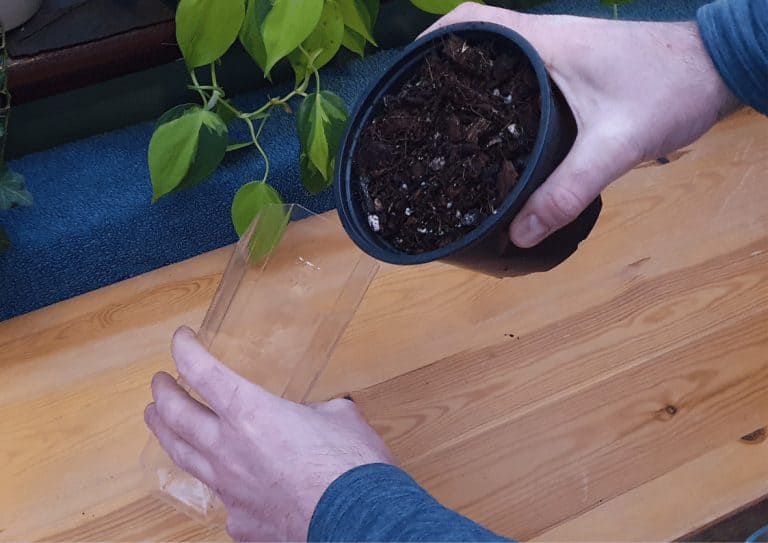
One liter of each potting mix was placed into a clear plastic vessel to allow us watch the progress of water as it travelled upwards.
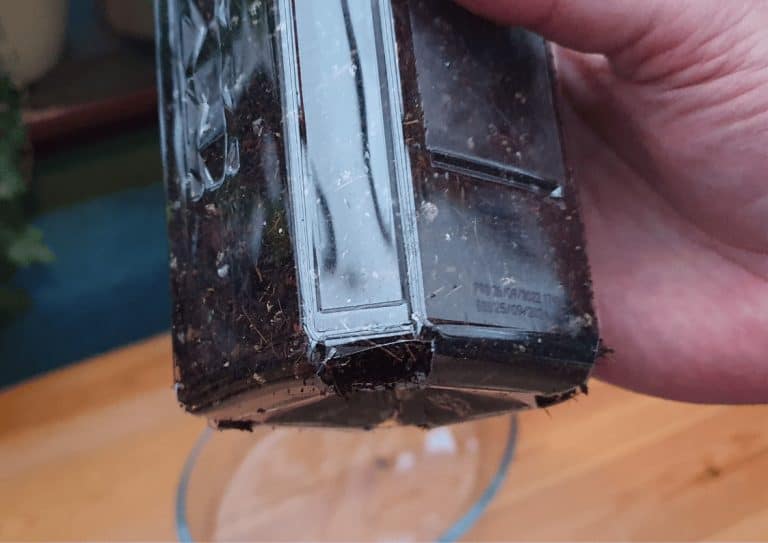
Holes allowed water to be absorbed by the soil and excess to be drained away.
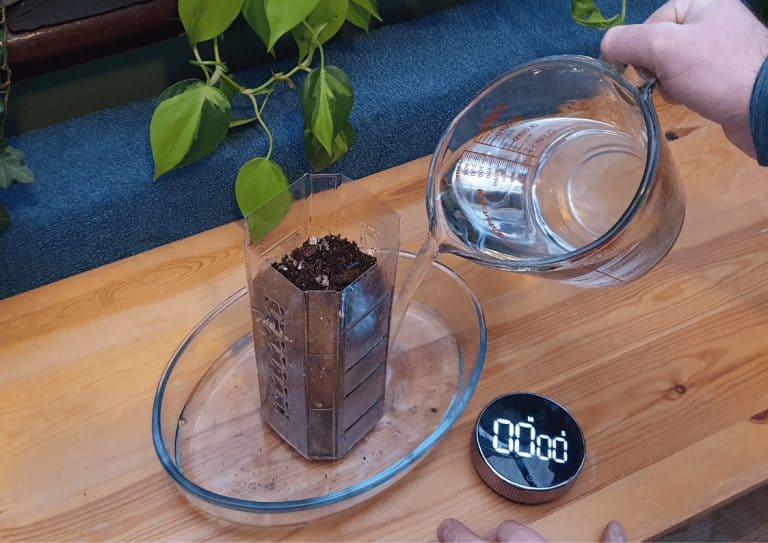
1,000ml (35.2oz) of water was added to the dish and once the potting mix had absorbed as much as it could the volume of water remaining in the dish was measured.
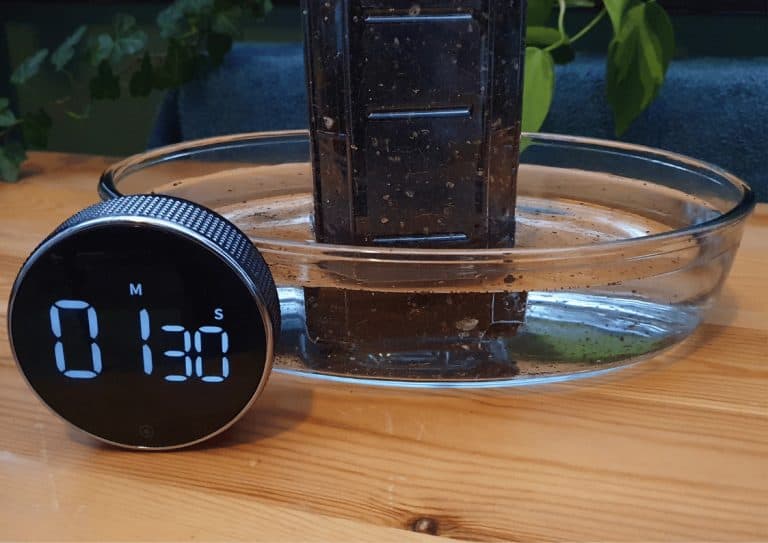
The clock was stopped when the top layer of the potting mix was moist. Full saturation of the potting mix took 90 minutes for the Monstera/Philodendron soil and 60 minutes for the general houseplant potting mix.
What Type Of Water Do Houseplants Like?
It’s often prescribed online that houseplants should only be watered with filtered water or tap water that has been left out overnight to allow the added chlorine and flouride to break down.
But whilst this advice sounds like it has a plant’s best interests at heart it holds little truth.
After years of keeping houseplants we have experienced no issues whatsoever with using tap water direct from a municipal source with no filtration and no other treatment (albeit the Scottish waters are on the soft side).
Unsurprisingly rain water if it can be collected is the best source of all, whilst distilled water collected in something like a dehumidifier will be void of unnatural impurities, but tap water will also do just fine.





